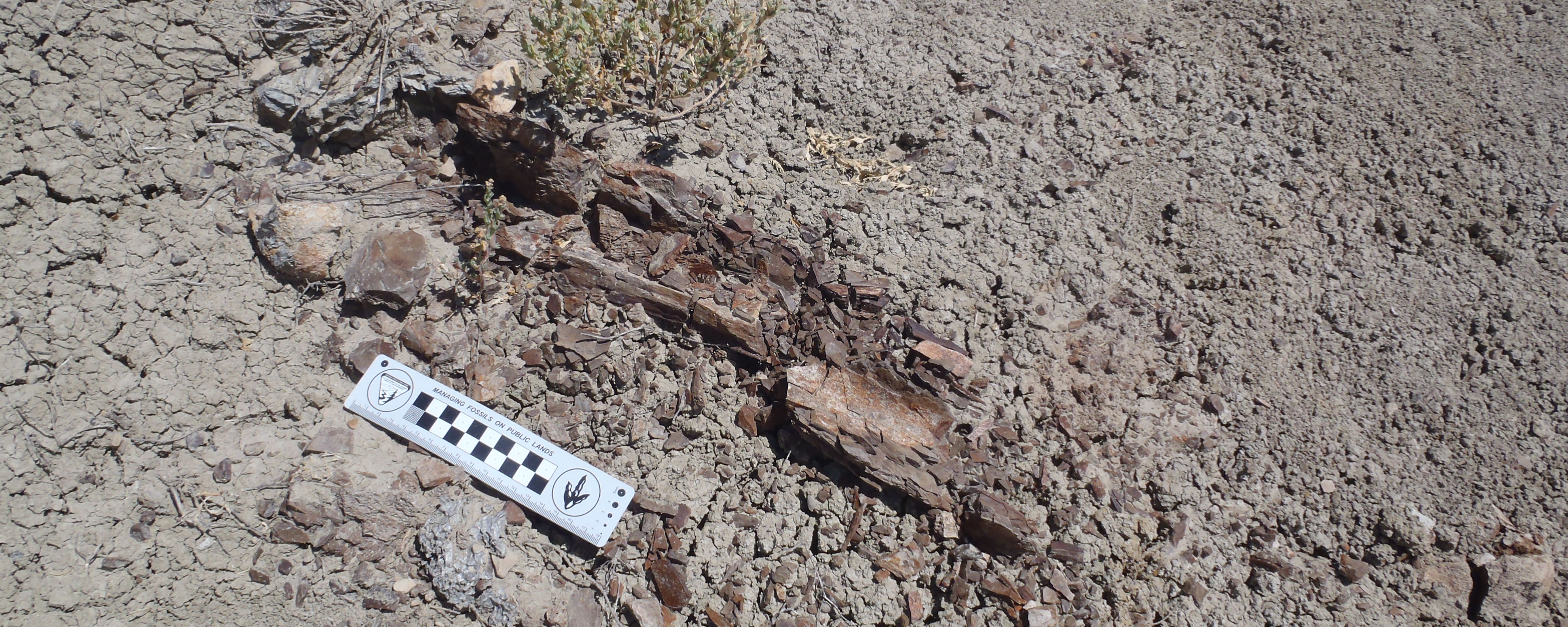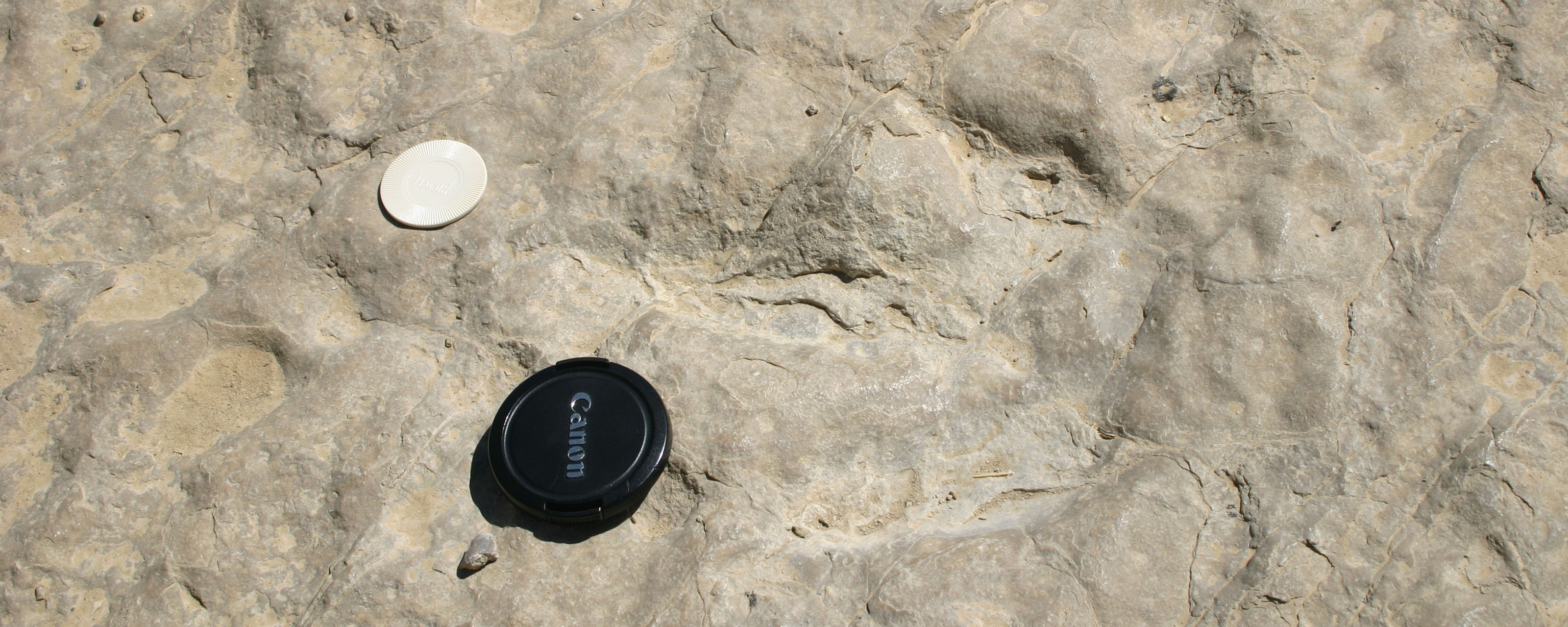


There is nothing like geology; the pleasure of the first day's partridge shooting or first day's hunting cannot be compared to finding a fine group of fossil bones, which tell their story of former times with almost a living tongue. -- Charles Darwin, letter to his sister Catherine, 1834
The crust of our Earth is a vast cemetery where the rocks are tombstones on which the buried dead have written their own epitaphs. -- "The Silurian Beach", 1866, Louis Agassiz
BIG QUESTION: What are fossils, and how do they form?
What are Fossils?
Initially, the word "fossil" (from Latin "fossilium", "that which is dug up") included anything interesting that people pulled out of the ground: unusually-shaped stones, minerals, human artifacts, and the remains of organisms. Eventually, however, the term was restricted to organic remains.
The contemporary definition of fossil is the physical remains or trace of behavior preserved in the rock record. Specimens which were actually once part of a living thing (bones, teeth, skin, shell, leaves, trunk, pollen, egg, etc.) are body fossils; those that are marks in the sediment produced by the activities of living things are trace fossils.
Some common type of trace fossils (also called ichnofossils) include:
Trace fossils of this sort are preserved the same way that other sedimentary structures were: the features are covered over by another layer of sediment, and the lithification process locks the shapes into place.
Other types of trace fossils are products of the action of organisms, that get preserved in the same general manner as body fossils. This includes such things as:
Something to consider about trace fossils: they were produced by the organism while it was still alive. This makes them distinct from your average body fossil, which are parts of things that had died.
Necrolysis: How long was the body exposed before burial? Did scavengers get a chance to eat it (or parts of it)? How about decay organisms, or the weather? Consider that the VAST majority of dead bodies never get a chance to get buried: they wind up in the guts of other organisms, or decayed into organic material that becomes part of the soil or sediment.
Biostratinomy: In general, the faster the rate of burial after death, the more complete the fossil will be. (This is why some of the best fossils are those from bodies trapped in some form of sediment such as tree resin (future amber) or tar or mud: the biostratinomy process began before the individual was dead!).
However, the higher the energy of the environment of burial, the greater the chance the body will be torn apart by current action. Very quiet water (like the bottom of lakes, lagoons, etc.) is very good for preserving fine details (especially of small-bodied organisms), but only if that bottom environment is not populated by worms, clams, and other sediment-churning animals: for example, if the bottom-water is anoxic.
Sometimes specimens are buried in place or in situ (also called autochthonus); other times the specimen was transported before burial (allochthonous).
Diagenesis: Once the prevailing wisdom was that most fossils were "petrified": turned to stone by chemical action. In fact, it turns out the situation is more complicated than that.
For a great many fossils the original hard parts and even some of the original organic material remains. This was not appreciated until chemical analyses began to show that the cellulose was still there in most fossil plants, the hydroxylapatite and collagen fibers in fossil bone, even the chemical residues of feathers and hair and leaf. These are definitely NOT pristine material, and they have been subject to some decay and alteration by time, but they are still there.
In some cases the original material is still there, nothing else has been added to it, and the tissue and hard parts are still basically in their original dead condition, as in this freeze-dried mammoth. Such unaltered material becomes increasingly rare the farther back in time you go.
For shells made of carbonate material, it is common to find them where the original material is still there, nothing has been added to it, but the crystals have regrown at the temperature and pressures of burial. These recrystallized fossils will lose the microscopic details of more pristine ones.
The most common mode of preservation for vertebrate bones and teeth and wood (and pretty common for shelly fossils, too) is permineralization: the original hard parts and even some organics are present, but the pore space of the bone, wood, or shell has been filled in by minerals from the pore water. This is exactly comparable too (indeed, happens at the same time as) the cementation of the sediment. Because of this, fossil bone or wood is much denser than living bone or wood; breaks along cracks; and otherwise acts like rock. But the original microscopic details -- and even chemical details -- are often still there.
Carbonized fossils are ones where compression after burial has squeezed some of the tissues (chitin; hair and leaves; cellulose and lignin) to concentrate the carbon and remove some of the other chemical components. These are preserved as thin black surfaces (in the case of wood, they can be much thicker: that is, as coal). Often the original microscopic structures of these tissues can still be found. The presence of carbonized keratin (beaks, scales, etc.) is more common than once thought: older generations of paleontologists dug right through these to get to the bones.
However, there are also situations when original fossil material is lost to some degree or other. Actual replacement of the original hard or soft parts by some other mineral does occur, as in this coiled ammonoid where the carbonate was replaced by pyrite. Recent experimental evidence suggest that chemical replacement by such minerals as pyrite, silica, phosphates, and the like actually begins quite quickly after burial if the diagenetic conditions (particular combinations of acidity or alkalinity; pressure; temperature; oxygen level; etc.) are correct.
Silicified fossils are particularly useful for understanding fine details: because silica is so chemically and mechanically resistant, it is possible to take silicified specimens and basically dissolve the rock around them, and find little projections, spikes, and other features that might normal be lost through preparation.
Sometimes the fossil itself is actually lost during diagensis: acidity in the pore water dissolved the shell or bone or wood, leaving a void space or mold. Molds are hollow spaces showing the fossil in reverse. Sometimes molds are of just one surface (an impression); other times they are the complete outside surface in reverse (external mold); or sometimes an inner space filled in (an internal mold).
These can be filled in (artificially by humans, or naturally by sediment or mineral from ground water) to produced a cast: a 3-D replica of the original fossil, where not a single atom of the cast was part of the original organism. Here is a complementary set of a mold (left) and natural cast (right) of a coiled ammonoid.
Some Lagerstätten occur because they trapped a great number of individuals, and thus concentrated the amount of specimens in one area (such as the La Brea Tar Pits of Los Angeles). Others are famous because they preserved otherwise rare soft-bodied organisms, and thus give us a much more complete picture of the biodiversity of that time and space (such as the Burgess Shale of British Columbia.)
Lagerstätten are thus of great importance for our better understanding of the ancient world.
On the "unknown unknown" of fossils:
Uncovering the nature of Daemonelix trace fossils:
The "Odd Couple" fossil pair:
